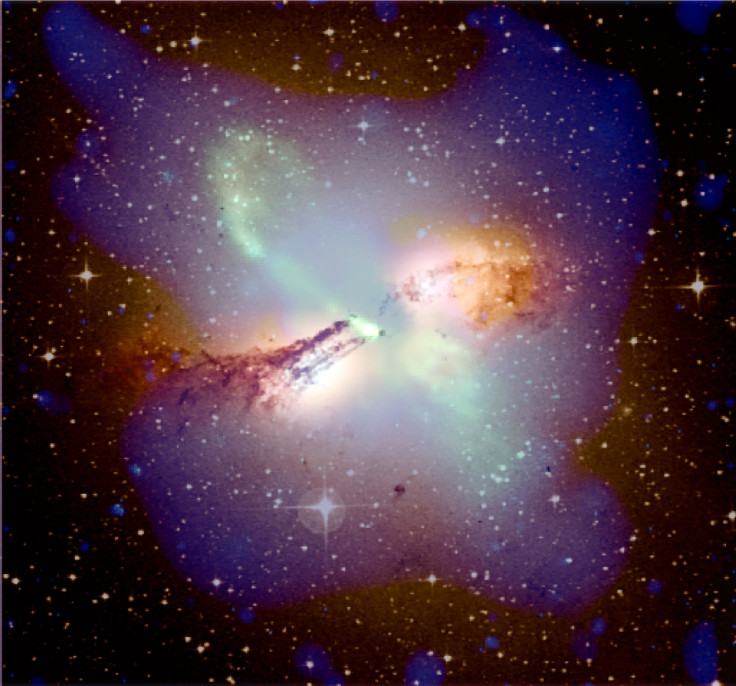Shine Like A Black Hole? New Image Shows Bright Jets Spewing From Galaxy Center
KEY POINTS
- A new image of galaxy Centaurus A combines views from various observatories
- It shows bright jets spewing out from the center, where a supermassive black hole is
- The areas around black holes are said to host some "spectacular light shows"
Of the beautiful and mysterious objects in the universe, black holes don't usually have a reputation for shining bright. In a new image, however, the black hole at the center of a galaxy can be seen hosting quite a brilliant light show.
Centaurus A (Cen A) is a galaxy in the Centaurus constellation some 12 million light-years away from the Earth. It is the "fifth brightest galaxy in the sky," according to NASA.
This week, NASA shared a new image of the well-studied galaxy, showing a combination of the views from various observatories: the Chandra X-Ray Observatory, the Imaging X-ray Polarimetry Explorer (IXPE) satellite and the European Southern Observatory in Chile.
Perhaps the most striking part of the image is the bright light coming from the center of the galaxy. The brilliant light is actually from the supermassive black hole at the center of the galaxy, NASA noted. And the bright jet spewing from the upper left part of the image even extends as far as 13,000 light-years away from the black hole.
"Black holes may be shrouded in darkness, but they can still put on quite a light show!" NASA Universe noted in a tweet.
Black holes may be shrouded in darkness, but they can still put on quite a light show! The jets from Centaurus A's central black hole shine in this image combining data from IXPE, @chandraxray, and the European Southern Observatory: https://t.co/ZuvBTvV6Os #BlackHoleWeek pic.twitter.com/EtVoNPK8P3
— NASA Universe (@NASAUniverse) May 2, 2023
Now, one may wonder why it's so bright when black holes are notorious for being quite dark. The gravitational pull of a black hole's event horizon — essentially its "surface" — is even said to be so strong that not even light can escape it.
But in the image, the black hole is said to be too small to be seen. The bright light we can see is the jets of material spewing out from the feeding black hole.
"In the center of this galaxy is a supermassive black hole feeding off the gas and dust encircling it, and large jets of high-energy particles and other material spewing out," NASA explained. "Also visible is a dust lane, wrapping around the middle of the galaxy, which may have resulted from a collision with a smaller galaxy millions of years ago."
The new image was released in time for this week's event: Black Hole Week. It provides a rather different view of black holes, which are often pictured as dark and empty.
Welcome to #BlackHoleWeek!
— NASA Exoplanets (@NASAExoplanets) May 1, 2023
Most galaxies, like our Milky Way, have black holes at their centers. This computer-simulated image shows what that might look like. In the center is the black hole’s event horizon, where no light can escape. https://t.co/mayS4A7WiA pic.twitter.com/yKmPvuLB7w
As NASA said, even though even light can't escape the event horizon, "the areas around black holes can host some of the universe's most spectacular light shows!"
Indeed, the image shows just how bright and awe-inspiring these events can be.

© Copyright IBTimes 2025. All rights reserved.






















